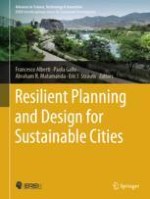2024 | OriginalPaper | Chapter
Culture-Based Urban Development in Nawalgarh, India
Authors : Chandni Chowdhary, Satish Pipralia
Published in: Resilient Planning and Design for Sustainable Cities
Publisher: Springer Nature Switzerland
Activate our intelligent search to find suitable subject content or patents.
Select sections of text to find matching patents with Artificial Intelligence. powered by
Select sections of text to find additional relevant content using AI-assisted search. powered by
